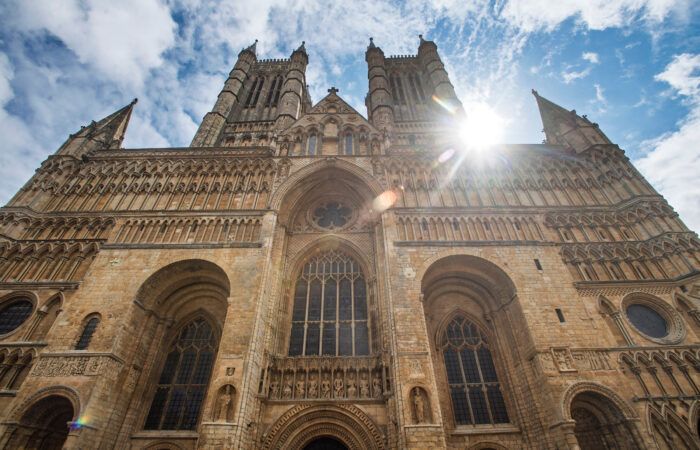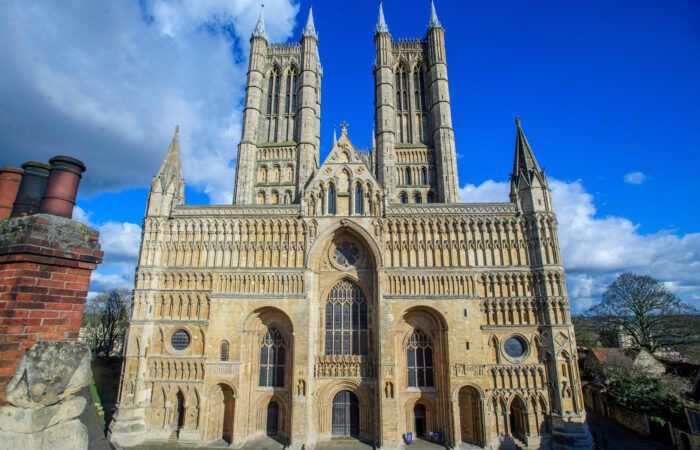The Feast of the Transfiguration
At the last lecture of the Lincoln Theological Society a passage was quoted from Kenneth Grahame’s book, ‘The Wind in the Willows’. I realised as I was preparing for this sermon that it would be a good way to begin this morning. It comes as the Water Rat and Mole approach the Piper at the Gates of Dawn.
‘Then suddenly the Mole felt a great awe fall upon him, an awe that turned his muscles to water, bowed his head, and rooted his feet to the ground. It was no panic terror-indeed he felt wonderfully at peace and happy- but it was an awe that smote and held him and without seeing he knew it could only mean that some august Presence was very, very near.
‘Rat’ he heard himself whisper. ‘Are you afraid?’
‘Afraid?’ murmured the Rat, his eyes shining with unutterable love, ‘Afraid of Him? O, never, never! And yet – and yet, O Mole I am afraid!’
Then the two animals, crouching to the earth, bowed their heads and did worship.
Our readings this morning on this Feast of the Transfiguration are full of wonder and awe. They conjure up such vivid images for us of majesty and glory. From the book of Daniel we read of the Ancient One with his clothing white as snow and his throne of fiery flames with its wheels burning fire. In the second letter of Peter he describes his mountain top experience and the voice of majestic glory. What can we do in the face of such majesty and wonder but bow down and worship.
Transfiguration means a change of form, a metamorphosis. According to St. John of Damascus at the moment of transfiguration Christ “was not assuming something that he was not, nor changing into something which he was not, but manifesting what he was to his own disciples.”
Thus, this story is not only about the transfiguration of Christ, but also the transformation, the transfiguration, of the disciples. The transfiguration shows us the classic beauty of our image. The glorified Christ is the model and prototype of who we are and who we are to become. The transfiguration reveals our origin and our telos – our completion and fullness. And most importantly like the disciples we are not simply spectators, we too participate in this event.
The face and garments of Jesus become transformed. The glory of God shines on the face of Jesus and the dazzling white of his clothes radiates his holy identity. Two of his ancestors, Moses and Elijah, appear in conversation with him. Both of these were men of the mountains who had experienced both suffering and glory in their leadership of God’s people. They talk with Jesus who is both in continuity with – and the fulfilment of the law and the prophets.
Then Peter makes what he thinks is a brilliant suggestion that Jesus, Moses and Elijah be settled on the mountain in tents or booths, which Peter will build in order to celebrate a kind of extended Feast of the Booths or Tabernacles. Since childhood, Jesus and his disciples would have celebrated this feast, so Peter grasps at an action that will restore some familiarity to this unfamiliar event. But the Transfiguration is not about slipping back into the security of the past, and not about settling down.
Peter’s contribution is immediately over shadowed as the Father takes the initiative and tents over the mountain with a bright cloud. ‘This is my Son, my Chosen; listen to him.’ The identity of the Son was proclaimed at his baptism, but now the command to ‘listen to him’ is added. To understand Jesus – his disciples must listen and listen and listen to what he is saying about suffering and death and resurrection.
They must hear his good news that is announced in his transfiguration of crippled bodies and minds into whole and healed humanity; in the transfiguration of sinners through forgiveness; in the transfiguration of bread and wine into his body and his blood.
And after they have seen Jesus on another hill, raised up and broken on a cross, they will learn to believe in the transfiguration that brings him from the tomb to the mountain of their great commissioning by Jesus, the risen and glorified one.
On Lindisfarne they talk of ‘thin places’ where the world is more transparent to the presence of God. Thin places describe the veil being parted between this world and the other world, between heaven and earth, between the divine and the human, between matter and spirit, between the eternal and the temporal. In the thin place the duality of those parings disappears and we stand in union, wholeness, and ultimately holiness.
Thin places do that. They transform our lives. The veil parts and we know ourselves to be different. We and our whole world now stand in a different light. That is what happened to Peter, James, and John. Jesus led them to a thin place, a place where human ears would hear God’s voice, human eyes would see divine light, and human life would be enveloped in the cloud of God’s presence.
The gospel readings in the lectionary for the past few weeks have all been about the coming of the kingdom of God explained through the use of parables. Canon Peter Neil noted in his sermon last Sunday that we are living in disturbing times and I have to agree with him. So what has the story of the transfiguration to tell us about living in these disturbing times? How can it help us to look for and find and participate in the kingdom and so make a difference in our world today?
The disciples were told to listen to Jesus and John Neafsey, in his book A Sacred Voice is Calling, writes that the most important place we can hear God’s voice is in the cry of the poor. We know that God is always alive in the struggle for justice. We know that God lives among the marginalized, that God fights for the poor and upholds the weak.
Our transfiguration comes as our eyes are opened and our hearts changed. And the people who seemed so different from us before — the poor and the marginalized — we will see them as they really are: made in God’s image, just as we are. The Transfiguration reminds us that things look different when one stands in God’s very presence.
When we find ourselves in the presence of God, it can be very unsettling. Our way of living and of thinking is challenged. The challenge is to see beyond where we are.
The transfiguration story is inviting us to see creation as ‘thin’, sacramental, alive with the divine, a vision of beauty and grace open to us all. It is, if you like a new way of seeing, a way of being aware that makes the ordinary extraordinary and the commonplace nothing less than a miracle.
To see and live and pray like this is transfiguration.
The Scottish poet Edwin Muir, wrote a poem called Transfiguration and it begins like this;
So from the ground we felt that virtue branch
Through all our veins till we were whole, our wrists
As fresh and pure as water from a well,
Our hands made new to handle holy things,
The source of all our seeing rinsed and cleansed
Till earth and light and water entering there
Gave back to us the clear unfallen world.
Edwin Muir is imagining in his poem what it might be like to glimpse a vision of the world transfigured, transformed into an Eden-like world where all the painful, dreadful things that hurt people have been undone – rinsed and cleansed, a world where all is as it could be, should be, suffused in glory.
The glimpse is fleeting but it’s a moment that changes everything. It’s about that sudden dawning when we glimpse a different reality, a different possibility, a sense of what the world looks like when we see it in the depth of its glory and beauty, when we recognize what Gerard Manley Hopkins calls that “dearest freshness deep down things”. It is what the Water Rat and Mole saw and experienced at the gates of dawn.
There is a story about John Ruskin, who was shown a very beautiful and delicately wrought silk handkerchief by its owner; sadly a drop of indelible ink had fallen onto it, and she told him it was ruined. Ruskin asked if he might borrow it. Some days later he returned it; and she saw that, beginning from the ink blot, he had drawn the most lovely and intricate pattern. The whole silk handkerchief had been transformed.
God’s work with us begins from where we are, so that we become the transfigured people of God. And as the transfigured people of God we can make a difference and help to bring in the kingdom of God now in these disturbing times.
It will not be easy. Like Peter, we blunder about in the presence of glory: we miss the point by trying to capture it instead of paying attention to what God is doing. The voice from the cloud tells us what we must do. ‘This is my Son, the Beloved: listen to him!’. If we can discern his voice amid the clamour and chatter that bid for our attention; if we will listen and obey and follow, then we can know transfiguration, glimpse glory in our ordinary days.
To see and live and pray like this will be transfiguration – let us bow down and worship. Amen.

